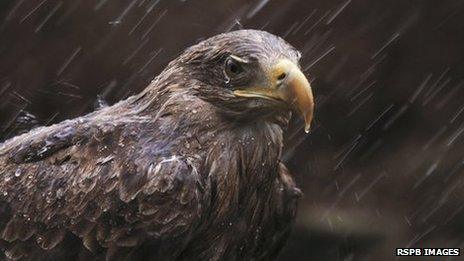Scottish islands set for renewable jobs boost 'if challenges overcome'
- Published

The research examined the benefits renewable energy could bring to the islands and also the challenges to the industry
The renewable energy industry could create more than 10,000 jobs on Scotland's islands by 2030, according to a government-commissioned study.
Orkney, Shetland and the Western Isles would benefit from wind, wave and tidal schemes, the Scottish Islands Renewable Project final report said.
However, it warned there were serious challenges to the industry such as high transmission costs.
The report has also highlighted delays in the laying of a key subsea cable.
Carried out by consultants, the research was commissioned by the UK and Scottish governments.
The generation of renewable energy could bring "significant benefits" to local economies through direct and indirect jobs, the report said.
By 2020, 392 full-time jobs could be created on the Western Isles, 463 in Shetland, 416 in Orkney and 3,000 across the rest of the UK.
The report said that by 2030 the job numbers on the islands could increase to more than 3,500 on the Western Isles, almost 2,900 in Shetland, and more than 4,500 on Orkney.
Other potential benefits of developing the renewable energy industry on Scotland's islands were also highlighted by the research.
For the Western Isles it said this could include reducing fuel poverty and halting a declining population.
The report said that within the past 100 years the isles' population had fallen by 43% to 26,100 in 2011.
Researchers also said the isles had a lower gross weekly pay compared with the rest of the UK.
They added: "The Western Isles also has the highest fuel poverty level in the UK, with 58% of households in fuel poverty compared with the national average of 28%.
"A household is said to be in fuel poverty if more than 10% of its disposable income is spent on household fuel use."

Costs associated with protecting wildlife were among challenges researchers investigated
Key challenges to the industry fulfilling its full potential on the islands were high transmission costs and the funds and infrastructure needed to link up projects in remote areas with the grid.
The report highlighted the delays and rising costs affecting plans to lay a subsea cable that would connect renewable schemes on the Western Isles with customers on the mainland.
Challenges considered to have a lower impact on growth were "marginally higher" development costs associated with protecting birds such as red throated divers, whimbrels and eagles and also crofting rights.
Angus Campbell, leader of Comhairle nan Eilean Siar (Western Isles Council), described the report as an "excellent piece of work" which underlined the local authority's position on renewable energy of the past 10 years.
He said: "The report clearly demonstrates that the onshore renewables sector offers the Outer Hebrides potential for significant new economic development.
"It demonstrates that the Outer Hebrides has an opportunity to make an important contribution to Scottish and UK renewables and decarbonisation targets and importantly it shows that island wind is competitive with other low-carbon technologies."
Mr Campbell added: "The report also confirms what the comhairle has been warning about repeatedly over the years - that there are significant challenges for the Scottish islands, particularly the barriers around transmission charges and grid access."
- Published2 May 2013
- Published4 March 2013
- Published18 January 2013
- Published7 November 2012
- Published5 November 2012
- Published30 July 2012
- Published15 January 2011